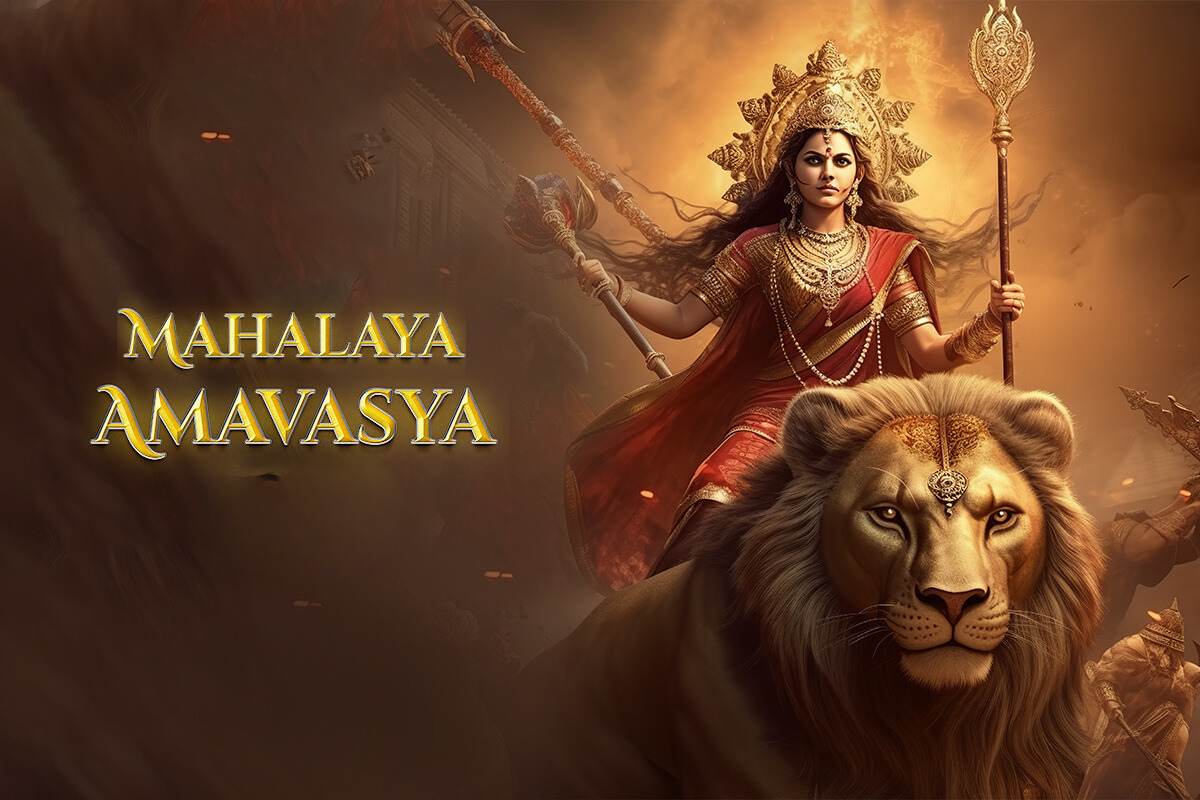Mahalaya is an important day in the Hindu calendar that marks the start of Durga Puja. It’s celebrated with great devotion, especially in Bengal and other parts of India. This day holds deep cultural and religious meaning, and it connects people with their ancestors and the divine power of Goddess Durga.

What is Mahalaya?
The word “Mahalaya” comes from Sanskrit. It is a time when Hindus call upon Goddess Durga to come to Earth and destroy evil. Mahalaya 2024 is expected to be celebrated with great excitement, as it begins the much-loved Durga Puja festival.
Historical Background of Mahalaya
The history of Mahalaya dates back to ancient times, with connections to famous Hindu epics like the Ramayana. According to legend, Lord Rama prayed to Goddess Durga during this time, asking for her blessings before his battle with Ravana. This moment in history explains why Durga Puja is now celebrated in the autumn.
Spiritual Significance of Mahalaya
Significance of Mahalaya lies in its role as a day of prayer and devotion. On this day, people remember their ancestors and seek blessings from the goddess. It is believed that on Mahalaya, the goddess begins her journey to Earth to defeat evil and restore peace.
Mahalaya and Durga Puja
Mahalaya is closely linked to Mahalaya and Durga Puja. It is the day when the countdown to Durga Puja begins. People wake up early in the morning to chant mantras and listen to stories about Goddess Durga’s victories over evil forces, such as the famous Mahalaya story of Goddess Durga, which tells of her defeat of the demon Mahishasura.
Pitru Paksha and Mahalaya
Mahalaya also marks the end of Pitru Paksha, a 16-day period dedicated to remembering and honoring ancestors. The rituals performed during this time are called Tarpan, and they involve offering prayers and food to the spirits of the deceased.
Mahalaya Rituals and Traditions
Mahalaya rituals and traditions include performing Tarpan, where people offer water and prayers to their ancestors, usually by riversides. This is done early in the morning, often followed by fasting or quiet reflection. These rituals ensure peace for the departed souls and prepare devotees spiritually for Durga Puja.
The Legend of Mahishasura Mardini
One of the most well-known stories told on Mahalaya is that of Goddess Durga defeating Mahishasura, the demon who terrorized both Heaven and Earth. This legend is recited in hymns, and the popular radio program Mahishasura Mardini plays a central role in Mahalaya celebrations.
Mahalaya and Ancestral Worship
On Mahalaya, ancestral worship takes place to honor the forefathers. People believe that their ancestors’ souls visit Earth during this time, and offering prayers helps bring them peace.
Cultural Impact of Mahalaya
Mahalaya has a deep cultural impact in India, particularly in Bengal. The early morning broadcast of the Mahalaya story of Goddess Durga and the chanting of mantras brings people together. Even in modern times, many still wake up to listen to these recitations.
Mahalaya Celebrations Across India
While Mahalaya is most famous in Bengal, it is celebrated across India in different ways. Each region has its own style of observing the day, but the central theme of worshipping Goddess Durga remains the same.
Modern-Day Relevance of Mahalaya
In today’s world, Mahalaya 2024 will likely continue the tradition of early morning rituals and prayers, though many people now listen to the radio broadcast on digital devices. The spirit of the day, however, remains unchanged, as families still gather to honor their ancestors and prepare for Durga Puja.
Famous Broadcast of Mahishasura Mardini
The broadcast of Mahishasura Mardini on Mahalaya morning is an old tradition that continues to hold meaning for many. It narrates the goddess’s triumph over the demon Mahishasura, representing the eternal battle between good and evil.
Mahalaya and Its Message of Good Over Evil
The story of Goddess Durga defeating Mahishasura is a reminder that good will always conquer evil. This message is at the heart of Mahalaya and Durga Puja, and it resonates with people across generations.
Conclusion:
Mahalaya connects people to their roots, their ancestors, and their faith. Its rituals and celebrations remain timeless, bridging the gap between the past and the present. Whether through the Mahalaya rituals and traditions or the iconic stories of the goddess, Mahalaya stands as a day of deep spiritual and cultural importance.
Curious Kasturi believes in honoring traditions like Mahalaya, which carry forward values of faith, respect, and goodness.



